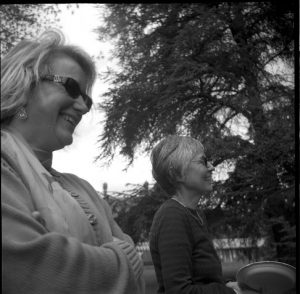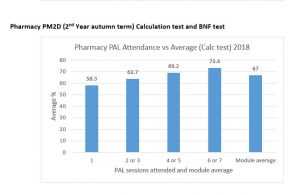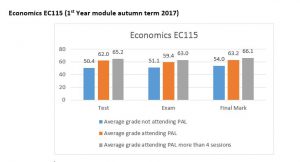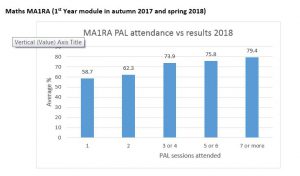Rita Balestrini, School of Literature and Languages, r.balestrini@reading.ac.uk
Overview
Between 2016 and 2018, I led a project aiming to enhance the process of assessing foreign language skills in the Department of Modern Languages and European Studies (MLES). The project was supported by the Teaching and Learning Development Fund. Its scope involved two levels of intervention: a pilot within one Part I language module (Beginners Italian Language) and other activities involving colleagues in all language sections and students from each year of study. The project enabled the start of a bank of exemplars for the assessment of a Part I language module; promoted discussion on marking and marking schemes within the department; and made possible a teacher-learner collaborative appraisal of rubrics.
Objectives
- To enhance Beginners Italian Language students’ understanding of rubrics and their assessment literacy
- To increase their engagement with the assessment process and their uptake of feedback
- To engage MLES students as agents of change in the assessment culture of the department
- To stimulate innovation in the design of rubrics within the MLES Language Team and contribute to develop a shared discourse on assessment criteria and standards informed by the scholarship of assessment
Context
In recent years, there has been an increasing demand to articulate explicitly the standards of assessment and to make them transparent in marking schemes in the form of rubrics, especially in Foreign Languages. It is widely held that the use of rubrics increases the reliability of assessment and fosters autonomy and self-regulation in students. However, it is not uncommon that students do not engage with the feedback that rubrics are supposed to provide. In 2016, the language team of the Department of Modern Languages and European Studies started to work at the standardisation and enhancement of marking schemes used to assess language skills. The aim of this multi-layered project was to make a positive contribution to this process and to pilot a series of activities for the enhancement of foreign language assessment.
Implementation
- Review of research literature and scholarly articles on the use of standard-based assessment, assessment rubrics, and students-derived marking criteria.
- Presentation on some of the issues emerged from the review at a School T&L Away Day on assessment attended by the MLES language team (April 2017) and at a meeting of the Language Teaching Community of Practice (November 2017).
- Organisation of a ‘professional conversation’ on language assessment, evaluation and marking schemes as a peer review activity in the School of Literature and Languages (SLL). The meeting was attended by colleagues from MLES and CQSD (February 2018).
- 2016-17 – Two groups of students on the Beginners Italian Language module were asked for permission to use exemplars of their written and oral work for pedagogic practice and research. Ten students gave their informed consent.
- Collection of written and oral work, double-marked by a colleague teaching one of the groups.
- 2017-2018 – Organization of two two-hour workshops on assessment for a new cohort of students. Aim: To clarify the link between marking criteria, learning outcomes and definitions of standards of achievement of the module. An anonymised selection of the exemplars collected the previous year was used a) ‘to show’ the quality of the standards described in the marking schemes and b) for marking exercises.
- 2017 – Organisation of three focus groups with students – one for each year of study – to gain insights into their perspectives on the assessment process and understanding of marking criteria. The discussions were recorded and fully transcribed.
- The transcriptions were analysed by using a discourse analysis framework.
- Some issues emerged from the analysis: atomistic approach of rubrics; vagueness of the standards; subjectivity of the evaluation; problematic measuring of different aspects of achievement; rating scales anchoring (for a more comprehensive account of the focus groups see the Engage in T&L Blog post Involving students in the appraisal of rubrics for performance-based in Foreign Languages).
- Developed, in collaboration with three students from the focus groups, a questionnaire on the use of rubrics. The questionnaire was intended to gather future students’ views on marking schemes and their use.
Impact
This multi-layered project contributed to enhance the process of assessing foreign language skills in MLES in different ways.
- The collection of exemplars for the Beginners Italian Language module proved to be a useful resource that can also be used with future cohorts. The workshops were not attended by all students, but those who did attend engaged in the activities proposed and asked several interesting questions about the standards of achievement described in the marking schemes (e.g. grade definitions; use of terms and phrases).
- The systematic analysis of the focus groups provided valuable insights into students’ disengagement with marking schemes. It also brought to light some issues that would need to be addressed before designing new rubrics.
- The literature review provided research and critical perspectives on marking schemes as a tool of evaluation and a tool for learning. It suggested new ways of thinking about marking and rubrics and provided a scholarly basis for potential wider projects. The discussion it stimulated, however different the opinions, was an important starting point for the development of a shared discourse on assessment.
Reflections
The fuzziness of marking students’ complex performance cannot be overcome by simply linking numerical marks to qualitative standard descriptors. As mentioned in a HEA document, even the most detailed rubrics cannot catch all the aspects of ‘quality’ (HEA, 2012) and standards can be better communicated by discussing exemplars. There is also an issue with fixing the boundaries between grades on a linear scale (Sadler, 2013) and the fact that, as Race warns, the dialogue between learners and assessors (Race, HEA) can easily be broken down by the evaluative terms typically used to pin down different standards of achievement. Despite all these pitfalls, in the current HE context, rubrics, if constructed thoughtfully and involving all stakeholders, can benefit learning and teaching.
By offering opportunities to discuss criteria and standards with students, rubrics can help to build a common understanding of how marks are assigned and so foster students’ literacy, especially if their use is supported by relevant exemplars.
The belief that rubrics need to be standardised across modules, levels and years of study makes designing rubrics particularly difficult for ‘foreign languages’. Cultural changes require time and the involvement of all stakeholders, especially where the changes concern key issues that are difficult to address without a shared view on language, language learning and assessment. A thorough discussion of rubrics can provide chances to share ideas on marking, assessment and language development not only between students and staff but also within a team of assessors.
I have tried to engage students in the appraisal of rubrics and to avoid a market research approach to focus groups. It is clear that, if we are committed to make any assessment experience a learning experience and to avoid the potential uneasiness that rubrics can cause students, we need to explore new ways of defining the standards of achievement in foreign languages. Establishing pedagogical partnerships with students seems a good way to start.
Follow up
I will encourage a differentiation of rubrics based on level of language proficiency and a collection of exemplars for other language modules. The natural follow up to this project would be to continue enhancing the rubrics used for evaluation and feedback in languages in the light of the analysis of the focus group discussions and the review of the literature on assessment, ideally with the collaboration of students. Possible connections between the marking schemes used to assess language modules and cultural modules will be explored.
References
HEA, 2012. A Marked Improvement. Transforming assessment in HE. York: Higher Education Academy.
Race, P. Using feedback to help students to learn [online] Available at https://www.heacademy.ac.uk/knowledge-hub/using-feedback-help-students-learn [accessed on 15/8/2018]
Sadler, D. R. 2013. The futility of attempting to codify academic achievement standards. Higher Education 67 (3): 273-288.
Links to related posts
Working in partnership with our lecturers to redesign language marking schemes




